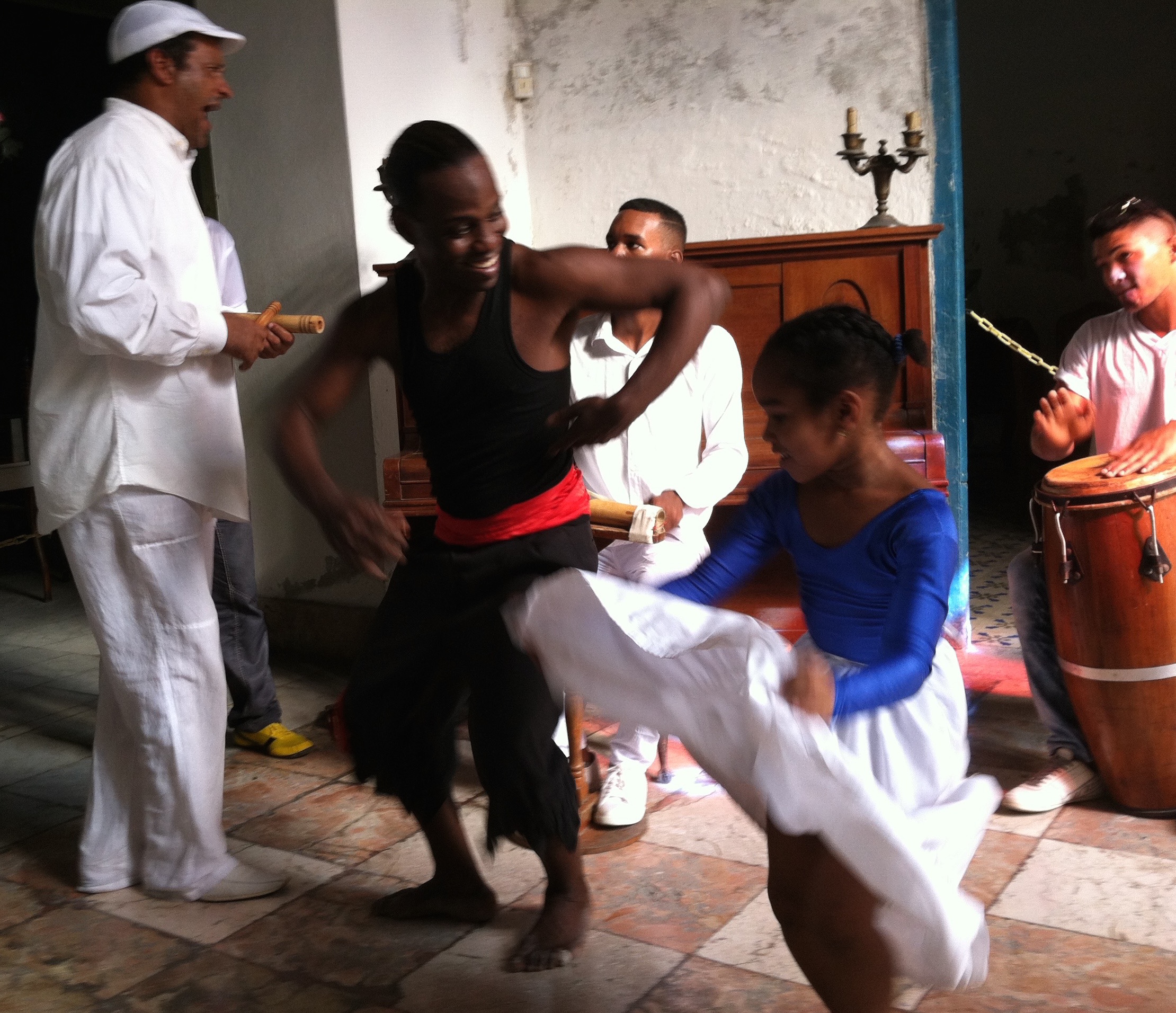Artist-Educators, Blog, Cuba, Cuban Jazz, Jazz on the Tube Interview, Latin Jazz, People, Podcasts, Travel to Cuba
For more Jazz on the Tube podcasts click here
Interview
Download the mp3 here
How is this for a cool project?
New York-based composer and bassist Matt Geraghty, Brazilian producer and saxophonist Zé Luis, and filmmaker/director Laura Newman are visiting major music hubs on the old trade routes – New York, New Orleans, San Juan, Cuba (and soon Brazil and West Africa) – to document and make music with local musicians.
They arrive in a place and create 21 bands in 21 days being guided by the local musicians themselves.
Their most recent project was 21 days in Cuba.
Day Six – Serendipity in the neighborhood
Trade Winds Cuba – Day 21
– Ken McCarthy
Jazz on the Tube
P.S. Our unique programming is made possible by help from people like you. Learn how you can contribute to our efforts here: Support Jazz on the Tube
Thanks.
Blog, Cuba, Travel to Cuba

We got back from Cuba on Sunday.
We were literally flying north as President Obama was flying south.
The trip exceeded even my wildest expectations and that’s because Ned Sublette was running the show. I can’t imagine a richer introduction to the country and its music.
Thanks to Ned, in ten days we were plugged into the Cuban music scene in ways that would have taken us a decade or two if we’d tried to do it on our own.
I’m going to have to go back and shoot some real video, but in the meantime, here are some short clips at the bottom of this page to give you a taste of some of what we experienced.
Havana Jazz Clubs
We’ve also added Havana to our featured list of jazz clubs on the blog.
Does Havana have a lot of jazz clubs?
No.
Are the ones they do have worth visiting?
YES!
The talent is sky high and there’s a lot of it. It would take weeks of going out every night just to scratch the surface.
Obviously, for Latin Jazz fans, Havana is heaven on earth, but the musicians there are taking the music in all directions at a very high level.
http://www.jazzonthetube.com/jazz-clubs/havana/
– Ken McCarthy
Jazz on the Tube
P.S. Our unique programming is made possible by help from people like you. Learn how you can contribute to our efforts here: Support Jazz on the Tube
Thanks.
Go to Cuba with Jazz on the Tube as your guide:
Click here for details
Blog, Cuba, Travel to Cuba

This coming March, I’ll be joining musicologist Ned Sublette and group of fellow travelers on a ten day musical pilgrimage to Cuba.
Cuba…
Unless you were a conscious music fan before January 3, 1961, you don’t know what it was like for there to be a fully open music channel between the musical superpower of Cuba and the US.
I sure don’t.
Little known fact: Havana and New Orleans were long time economic and cultural trading partners for centuries before the ruinous embargo.
You know all those brass instruments that were available so inexpensively in pawn shops in New Orleans that helped spark the jazz revolution?
They were leftovers from the Spanish-American War which saw thousands of US troops mustered in New Orleans for the invasion and subsequent occupation of Cuba.
Cuban musicians visited New Orleans in the pre- and early jazz era and many American musicians spent time in Cuba soaking up the sounds and inspiration which they then took back home.
There were three US military occupations of Cuba and New Orleans played a critical logistical role in each one. Note the dates they played in the critical formative period of New Orleans jazz.
1898 to 1902
1906 to 1909
1917 to 1922
Every one of these occupations involved military bands with musicians who stayed and played – and listened – on the island for months and in some cases years.
When Jelly Roll Morton, the self-described “inventor” of jazz, talked about the importance of the “Spanish tinge” in jazz, he wasn’t talking about music from Spain or Peru. He was talking about Cuba specifically.
Later, in 1941, the most recorded drummer in history, the incomparable Earl Palmer, a New Orleanean, stowed away as a 16 year old for a three day visit to Havana.
Here’s what he remembered:
“Do you realize Havana, Cuba in 1941 was one of the wildest places on earth? (With) music hipper than anything I’d heard to that day.”
Remember he was coming from New Orleans and saying that.
Years later when Tad Jones, the music historian and researcher, asked Palmer what was different about New Orleans drumming, he said, “Latin music.”
Before 1959, the city “closest” to Havana was not Miami or Tampa. It was New Orleans and if New Orleans is the birthplace of jazz, Havana is the music’s cousin, at the very least.
I’ll be posting photos, reports and, when I can get the permission of musicians, video clips…
Stay tuned!
– Ken McCarthy
Jazz on the Tube
P.S. Our unique programming is made possible by help from people like you. Learn how you can contribute to our efforts here: Support Jazz on the Tube
Thanks.
Go to Cuba with Jazz on the Tube as your guide:
Click here for details




